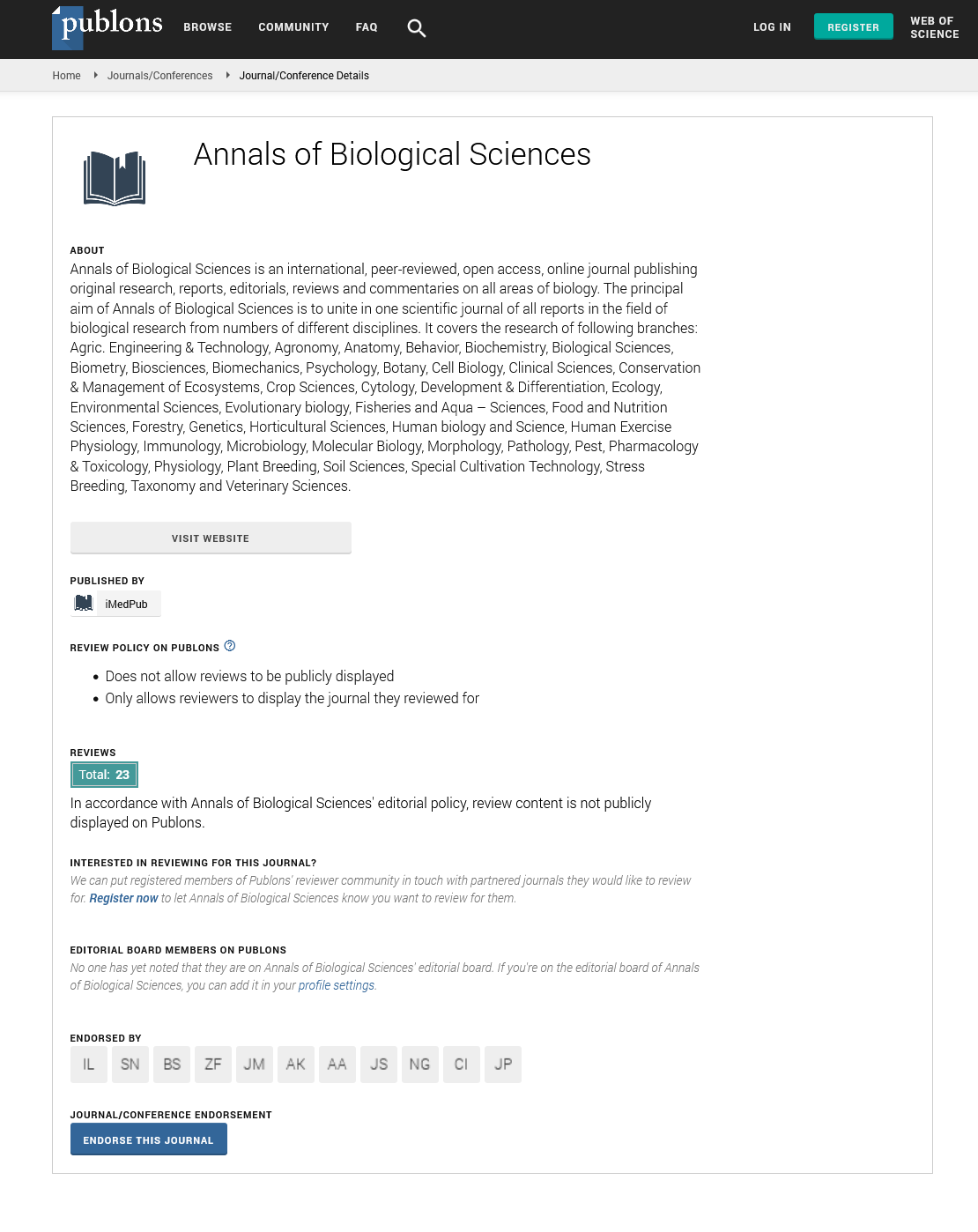ISSN : 2348-1927
Annals of Biological Sciences
Abstract
Characterization of the Kidney and Liver Material Properties in Unconfined Compression and Probing Protocols with Special Reference to Varying Strain Rate
The liver and kidneys are the most often damaged organs as a result of traumatic impact forces delivered to the abdomen, and they present a challenge to clinicians owing to the possibility of internal bleeding, which is difficult to identify. A greater knowledge of the process of damage will aid in diagnosis, therapy, forensics, and other disciplines. Finite element modelling is a technique that can help with this knowledge, but precise material properties, such as strain rate dependency and the possibility of utilizing animal tissue qualities instead of human tissue properties, are necessary. For both livers, the elastic modulus in a probing technique and the elastic modulus, failure stress, and failure strain in a compression procedure were discovered. At different strain rates, and kidney tissue from human and porcine specimens when comparing the unconfined compression and probing methods, increases in the elastic modulus were seen for both the human kidney and liver, but only for the porcine kidney. Strain rate dependence was discovered. For both the liver and kidney characteristics, and was found to have a greater saturation impact at higher rates for the failure stress than the elastic modulus. Overall, the material characteristics of intact liver and kidney were studied, and the strain rate dependency was numerically modelled. According to the study’s findings, several kidney and liver material characteristics differ between human and pig tissue. As a result, using swine tissue material characteristics in computational or physical models of the human liver and kidney is not always suitable.
Author(s): Erica Melena
Abstract | Full-Text | PDF
Share This Article
Google Scholar citation report
Citations : 406
Annals of Biological Sciences received 406 citations as per Google Scholar report
Annals of Biological Sciences peer review process verified at publons
Abstracted/Indexed in
- Google Scholar
- China National Knowledge Infrastructure (CNKI)
- WorldCat
- Publons
- ROAD
- Secret Search Engine Labs
Open Access Journals
- Aquaculture & Veterinary Science
- Chemistry & Chemical Sciences
- Clinical Sciences
- Engineering
- General Science
- Genetics & Molecular Biology
- Health Care & Nursing
- Immunology & Microbiology
- Materials Science
- Mathematics & Physics
- Medical Sciences
- Neurology & Psychiatry
- Oncology & Cancer Science
- Pharmaceutical Sciences
